Capacitors are found throughout switch mode power converters. The first FAQ in this series of three articles looked at the X and Y safety capacitors used in the input filtering section. The second article looked inside the power converter and considered dc link capacitors as well as energy storage and pulse power capacitors. This final FAQ moves to the output filter section. The types of capacitors that are commonly used for output filtering applications in switch mode power converters include aluminum electrolytic capacitors, tantalum capacitors, film capacitors, and ceramic capacitors.
Various capacitor characteristics are important when considering power filtering applications. In most cases, the equivalent series resistance (ESR) is a critical specification. At higher frequencies, equivalent series inductance (ESL) takes on increased importance. Energy density measured as the produce of the capacitance of the device and the voltage rating (CV) can be important. AC ripple current rating is important, ripple current causes heating, and exceeding this rating reduces capacitor lifetime.
Capacitors are nonlinear devices and temperature, voltage and frequency characteristics need to be considered since capacitor performance can vary under different operating conditions. And the dissipation factor (measure of the losses in a capacitor expressed as the ratio of the ESR of a capacitor to its reactance at a specific frequency and temperature) can be important.
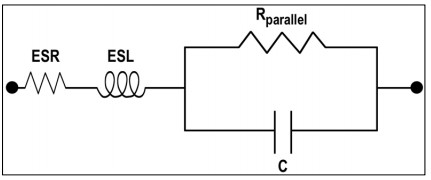
AC/DC power supplies
The frequency of output ripple in an AC/DC power supply is the same as the switching frequency. The output capacitor is used to provide enough energy to the load as well as filtering high frequency ripple voltage. A low ESR capacitor is needed to handle the large RMS ripple currents in most power supply outputs.
Aluminum electrolytics are the most common output filter capacitor in AC/DC power supplies. Tantalum capacitors have a higher energy density and are used where small sized is required. Tantalum capacitors also have superior filtering characteristics compared with aluminum electrolytics, but the high cost of tantalum devices limits their use.
Multilayer ceramic capacitors (MLCCs) can also be found in the output filters of AC/DC power supplies and DC/DC converters. The capacitance of MLCC chips depends on the dielectric, the size and the required voltage (rated voltage). The maximum capacitance value is determined by the production technique. For dielectric X7R that is 47µF, for Y5V it is 100µF. Voltage ratings range from about 4 volts to 3,000 volts.
MLCCs have lower ESR compared with aluminum electrolytic, tantalum and film capacitors, making they suited for use in switching power supply filters. The low ESR helps to reduce output ripple and MLCCs have lower ESL compared with other capacitor technologies.
Most film capacitors use polypropylene or polyester dielectric material. Each technology offers different performance tradeoffs. Polyester has a high dielectric constant which results in smaller capacitors. Polypropylene offers a relatively lower dissipation factor and higher current ratings. Film capacitors can withstand higher transients and are often used in high-current applications. However, they have higher ESR and ESL compared with ceramic capacitors and are generally not suitable for high temperature operation.
Inverters and variable frequency drives
In the case of pulse width modulated inverters, metallized polypropylene film capacitors have low losses across the bandwith of frequencies typically used in these designs. As a result of increased environmental awareness, oil-filled capacitors have been largely replaced by dry construction metallized polypropylene capacitors in inverter output applications. Pulse width modulation creates switching frequency currents and harmonics which superimpose on the fundamental AC frequency. The output filter capacitors must filter the entire spectrum from fundamental to harmonic frequencies.
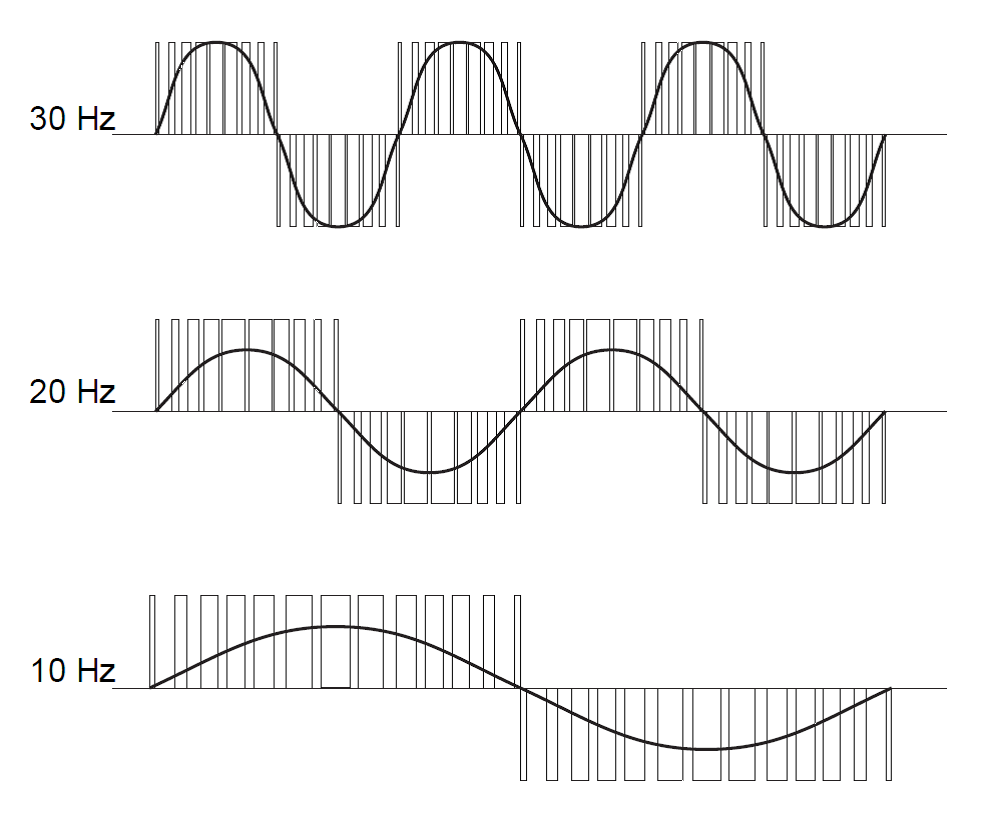
Metallized polypropylene capacitors in AC applications such as inverter outputs can fail for several reasons:
- Extreme dV/dT and peak current over the device specification limit
- Voltage breakdown initiated by an event such as
- Transients exceeding the device rating
- RMS current exceeding rating for a given ambient temperature
- High internal temperature from ambient and heat rise
- Avalanching cycle to failure
- Peak voltage finds weakest spot
- Self-healing occurs
- Losses rise leading to increased temperature
- Increased temperature leads to more self-healings
- Eventual run-away condition occurs
For three phase applications such as renewable energy systems and traction drives, TDK offers power film capacitors for AC filtering in three-phase delta connection applications. The B32376* series is designed for high power with a capacitance range from 3 x 10 µF to 3 x 400 µF with rated voltages from 250 VRMS to 1000 VRMS. The can diameters are 116 mm or 136 mm and the heights are between 200 mm and 275 mm. These capacitors have screw terminal M10 for safety installation. The capacitors in this series are also available in versions with a vibration resistance of 20 g.
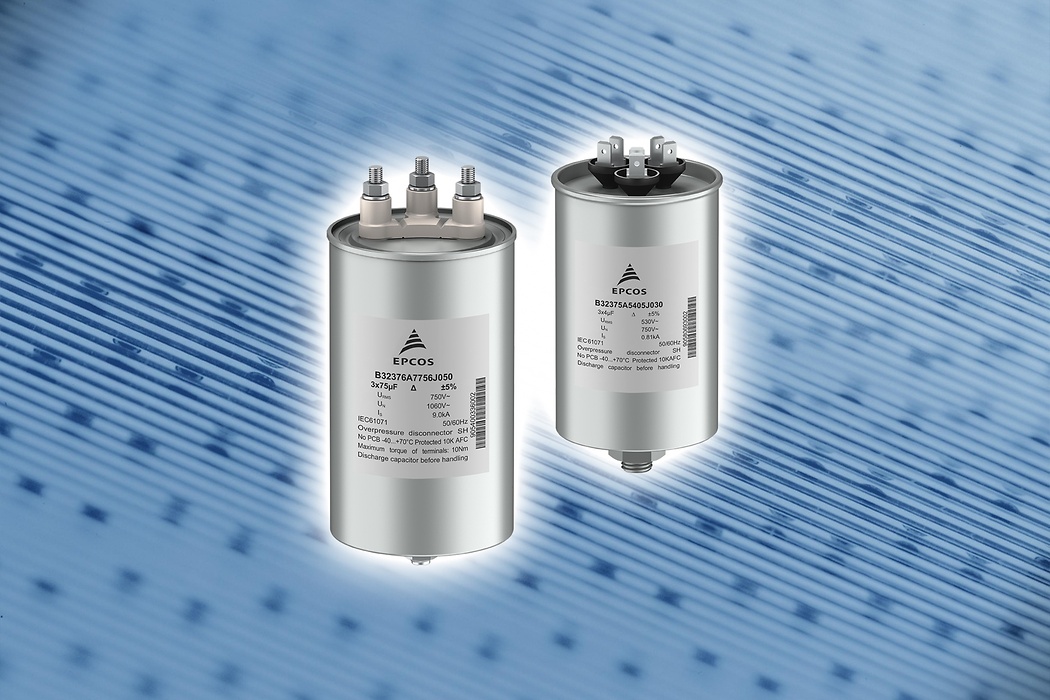
A key feature of the new B32376* capacitors compared with predecessor types is an improved safety device in accordance with IEC-61071, which eliminates the need for soldering. This results in a long service life of up to 100,000 hours at a continuous hot-spot operating temperature of 85 °C and 200,000 hours at 70 °C.
Embedded DC/DC applications
Many embedded DC/DC applications require external bypass “bulk” capacitors as part of the output load. These capacitors supply extra current during a step load change. Lower DC voltages used in newer logic devices mean that the voltage margin difference between logic ZERO and logic ONE is reduced to hundreds or even tens of millivolts. Thus, since even modest power supply noise can cause data errors by exceeding that threshold. Bypass caps are necessary to reduce DC/DC noise to an acceptable level.
Two approaches are commonly used: For highly sensitive loads such as high-performance microprocessors, and FPGAs, individual DC/DC converters and the needed bypass capacitors (usually MLCCs) are placed in very close proximity to the load. In applications where the loads are less sensitive, a single DC/DC converter can be used to drive multiple loads with the use distributed capacitance.
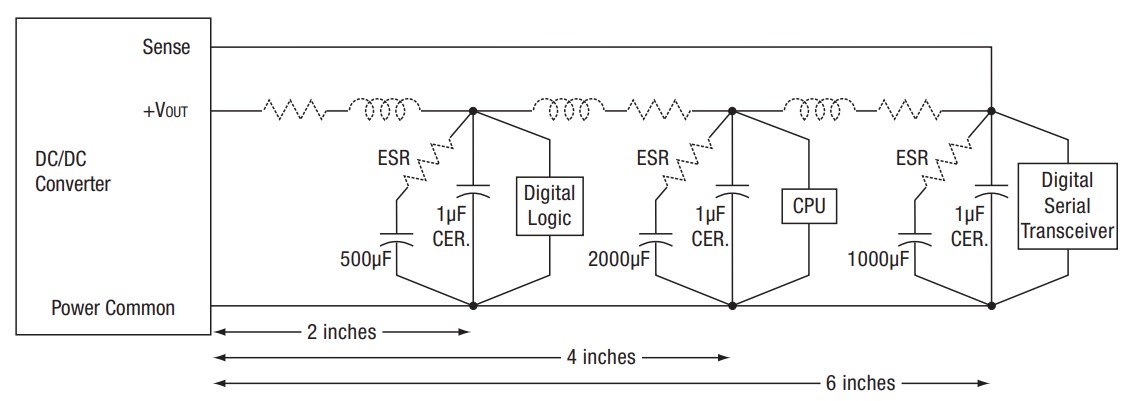
The example above shows three bypass capacitors, all at different distances from the DC/DC converter. The three small 1μF ceramic caps are used for high-frequency suppression. The various bypass capacitors are sized to meet the dynamic power demands of each individual subsystem. In a real system the stray inductances and resistances (dashed lines) can cause the dynamic response of the system to diverge from design requirements. Often, the only solution is to empirically adjust the various capacitors until the desired result is obtained.
The first two articles in this series of FAQs considered “safety capacitors for EMI filtering” on the input of AC mains connected power converters and “DC link, energy storage and pulse power capacitors” found inside various types of power converters. This discussion of “capacitors for power converter output filtering” concludes this three-part series.
References
AC Film Capacitors for Inverter Output Filters, Electronic Concepts
How Pulse Width Modulation in a VFD works, KEB Automation KG
Introduction to Capacitor Technologies, Kemet
Output Capacitive Load Considerations, Murata Power Solutions

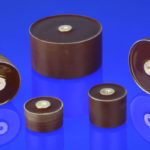
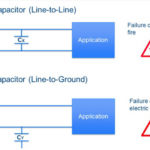
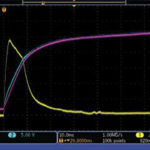
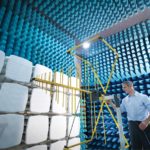

Leave a Reply